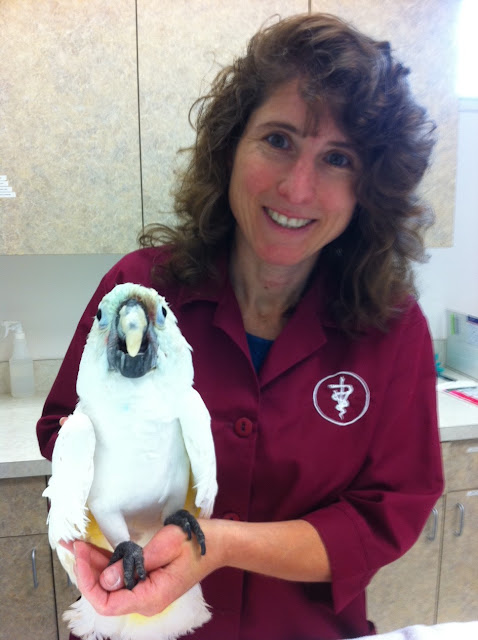Buddy's New Beak
Photos Courtesy Betsy Lott, Mollywood Avian Sanctuary
Photos Courtesy Betsy Lott, Mollywood Avian Sanctuary
We have been fortunate that none of our parrots have ever lost a beak in an accident or animal attack. Unfortunately we know people with parrots that have lost beaks. It's not a pretty situation. In the past, options for rehabilitation have been limited. But now, with new materials and new reconstructive techniques, we are starting to see prosthetic beaks as a viable alternative.
Twenty-nine year old Umbrella Cockatoo Buddy, Before
After initial reconstruction
Buddy needed a new beak. Since he couldn't grow one, a new beak needed to be constructed for him! The architect of Buddy's new acrylic beak is avian veterinarian Dr. Bridget Ferguson with Animal Health Care Center of Renton, Washington.
"Kind of a hoaky homemade thing that didn’t exactly go as planned. It was some wax lined drinking cups (overgown Dixie) that we cut and spiraled. The thing sticking up with the blue tip was something we used to keep Buddy's nare open so the compound didn’t fill in. When the mold came off, we were like, 'Uh oh.' Not exactly what we were hoping for but thank god for dremels. We dremeled the holy heck out of it."
According to Betsy Lott, Buddy needed his new beak filled after two and one-half months. Dr. John Berry with Lynden Veterinary Hospital let Betsy use his office in Lynden, Washington. Aided by notes and copious photographs taken from the surgery with Dr. Ferguson, Betsy Lott was assisted by Dr. Berry's licensed veterinary technician Keri Griffith, currently studying dentistry in mammals. Buddy's new acrylic beak required delicate work, sweat, patience, dremels, and hammers. And one gutsy parrot!
In a future blog post we will investigate the evolving science and engineering behind prosthetic parrot beaks. Stay tuned!
In a future blog post we will investigate the evolving science and engineering behind prosthetic parrot beaks. Stay tuned!





















4 comments:
Fantastic work!!!!
Fantastic work all around! Thank you!
Fantastic work all around! Thank you!
That's so fantastic! I hope his new beak works out for him. That's one brave parrot!
Post a Comment